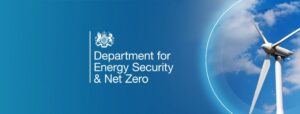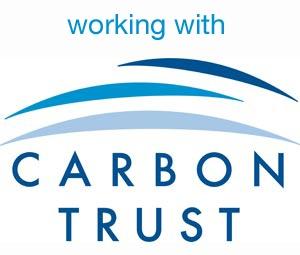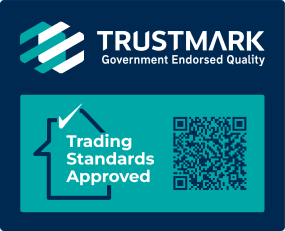As sustainability becomes a central focus in building and development projects, the importance of effective energy statements cannot be overstated. Energy statements provide a detailed analysis of a building’s energy use and efficiency, helping to ensure compliance with regulations and promoting sustainable practices. In this blog, we will explore the best practices for drafting effective energy statements.
What are Energy Statements?
Energy statements, also known as energy assessments or energy reports, are documents that outline the energy performance of a building. They are typically required as part of the planning application process for new developments, refurbishments, or significant renovations. These statements evaluate various aspects of energy consumption, efficiency, and sustainability within the proposed project.
Importance of Energy Statements
Compliance with Regulations
Energy statements ensure that a project complies with local, national, and international energy regulations and standards. This compliance is crucial for obtaining planning permissions and avoiding legal complications.
Promoting Sustainability
By analysing and optimising energy use, energy statements contribute to the broader goal of sustainability. They help reduce carbon footprints, promote the use of renewable energy sources, and support environmental conservation efforts.
Cost Savings
Effective energy statements identify opportunities for improving energy efficiency, which can lead to significant cost savings. Lower energy consumption translates to reduced utility bills and operational expenses.
Enhancing Property Value
Energy-efficient buildings are more attractive to buyers, tenants, and investors. An energy statement that demonstrates a building’s high energy performance can enhance its marketability and value.
Best Practices for Drafting Effective Energy Statements
- Understand the Regulatory Requirements
Before drafting an energy statement, it’s essential to thoroughly understand the regulatory requirements specific to your location and project type. This includes local building codes, national energy efficiency standards, and any other relevant guidelines.
- Conduct a Comprehensive Energy Assessment
A detailed energy assessment forms the foundation of an effective energy statement. This assessment should include:
- Energy Consumption Analysis: Evaluate current or projected energy consumption patterns.
- Energy Efficiency Measures: Identify potential energy-saving measures and technologies.
- Renewable Energy Integration: Assess the feasibility of incorporating renewable energy sources such as solar, wind, or geothermal.
- Use Accurate and Reliable Data
The accuracy of your energy statement depends on the quality of the data you use. Collect and analyse data from reliable sources, including energy bills, building plans, and energy modelling software. Accurate data ensures that your energy statement is credible and reliable.
- Include Clear and Detailed Calculations
Provide clear and detailed calculations to support your findings and recommendations. This includes energy consumption estimates, efficiency improvements, and cost savings projections. Use standardised methods and tools to ensure consistency and transparency.
- Address All Energy Aspects
A comprehensive energy statement should address all aspects of energy use within the project, including:
- Heating and Cooling Systems: Evaluate the efficiency of HVAC systems and explore opportunities for improvement.
- Lighting: Assess the energy efficiency of lighting systems and consider the use of energy-efficient lighting solutions.
- Insulation and Building Envelope: Analyse the thermal performance of the building envelope and identify areas for improvement.
- Appliances and Equipment: Evaluate the energy efficiency of appliances and equipment used within the building.
- Incorporate Renewable Energy Solutions
Where feasible, incorporate renewable energy solutions into your energy statement. This includes evaluating the potential for solar panels, wind turbines, heat pumps, and other renewable energy technologies. Highlight the environmental and economic benefits of these solutions.
- Consider Futureproofing
Futureproofing involves designing buildings and systems that can adapt to future energy needs and regulatory changes. Consider incorporating flexible and scalable energy solutions that can accommodate future advancements in technology and energy efficiency standards.
- Communicate Clearly and Concisely
An effective energy statement should be clear, concise, and easy to understand. Use plain language and avoid technical jargon where possible. Include visual aids such as charts, graphs, and diagrams to illustrate key points and make the document more engaging.
- Review and Update Regularly
Energy statements should be reviewed and updated regularly to reflect changes in energy use, technology advancements, and regulatory updates. Regular reviews ensure that the energy statement remains relevant and accurate over time.
Conclusion
Drafting effective energy statements is a critical step in promoting energy efficiency and sustainability in building projects. By following best practices such as understanding regulatory requirements, conducting comprehensive assessments, using accurate data, and incorporating renewable energy solutions, you can create energy statements that are both credible and impactful.
Effective energy statements not only ensure regulatory compliance but also contribute to cost savings, environmental conservation, and enhanced property value. By prioritising energy efficiency and sustainability, we can create a more sustainable future for our communities and the planet.
If you need assistance with drafting an energy statement for your project, our team of experts is here to help. Get in touch today to learn more about our energy assessment services and how we can support your sustainability goals.











